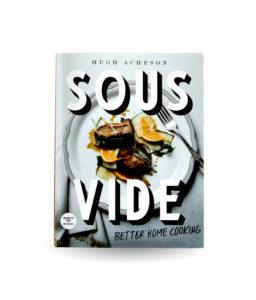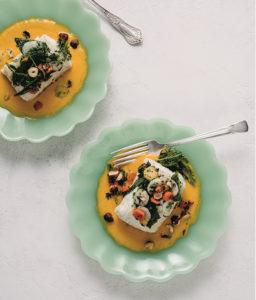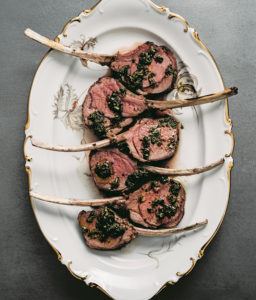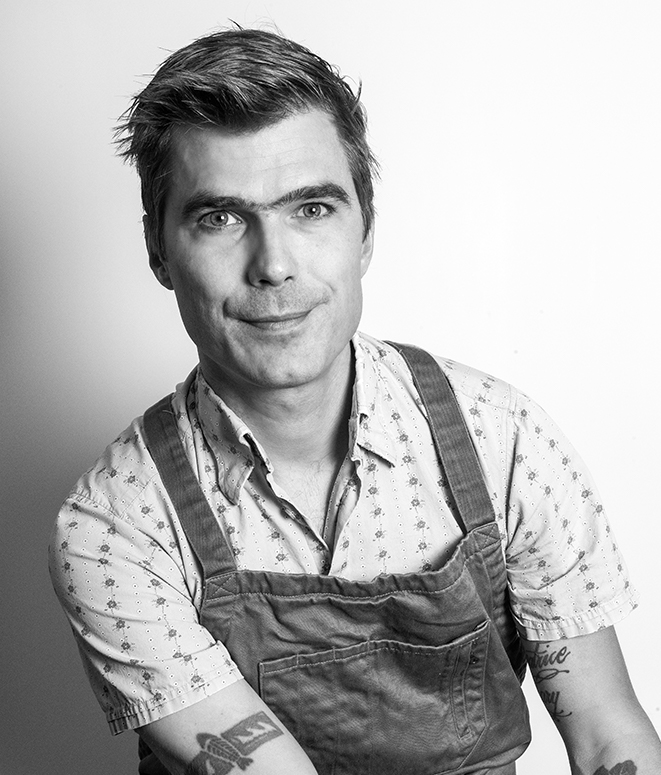Interview by Sara Johnson
Despite the increasing popularity of the sous vide cooking technique, the selection of cookbooks dedicated entirely to sous vide remains relatively small—although immersion circulators are earning mentions in the equipment lists of today’s releases. Chef Hugh Acheson, author of “The Chef and the Slow Cooker” (Clarkson Potter, 2017), turns his attention to another kind of slow-cooking method in his latest book: “Sous Vide: Better Home Cooking” (Clarkson Potter, 2019). Divided into sections like “Birds (& Eggs)” and “Beef & Pork,” the book’s 90 recipes include such varieties as Halibut with Carrot-Ginger Sauce and Hazelnut-Carrot Salad; Squid Stuffed with Chickpeas, Swiss Chard, and Garlic; and Quails with Chorizo and Cornbread Stuffing. It also includes two recipes any sous vide cookbook will likely include: eggs (his are 63.5°C Eggs) and steak (Perfect Steaks with Chimichurri). Sous-Vide magazine spoke with Acheson in advance of his book’s release on October 15.

Sous-Vide: Your book has a conversational writing style. You speak directly to the reader, with personal anecdotes in the recipes. Why did you decide to write the book in that style?
Hugh Acheson: I’m relatively irreverent, and I view chefdom from a different prism than many people do. I want to make sure we dispel this idea that cooking food necessarily should lie in a professional kitchen…. Food is completely attainable, and should be, and I think we need to demystify chefdom to a degree and make people feel a little prouder about the possibility they have with food at home.

SV: Did you have a person or a skill-level in mind that you were writing for?
HA: I want to convince people that the goodness of cooking from scratch is not necessarily about convenience, it’s about reenvisioning that it’s not inconvenient. That it’s a great use of your time and can be a very productive and empowering part of your day, if you can fit it in. And I think that we need—to be happy humans in a lot of ways—to be able to sustain ourselves well with tasty food. So it’s never about just dropping a bunch of things into a bag with sous vide or, in the case of a slow-cooker, into a Crock-Pot.
SV: You said it’s not just about dropping a bunch of things into a bag. So what is it about then?
HA: It’s about the want for consistency, and the want for precision cooking, and it’s about liking and learning about anything. It’s the want to nerd out on a subject, and learn more about it, and do it better. And then with sous vide it’s about—I think if you work with sous vide for a number of months, even in your home kitchen once or twice a week, you’ll begin to learn just a lot more about food, about how proteins cook, how things tenderize, what happens with vegetables that they cook at 85°C, and how the breakdown happens, and how sugar is best pushed to the surface of food. So all of those things just make you understand more about food, which is in my mind a truism that that’s not a bad thing.
SV: If someone who is completely new to sous vide cooking were to pick up your book, is there a recipe that you’d point to and say “start here”?
HA: I think that sous vide for the home has really been a promised land of cooking steak, and I think that that will explain a lot for a novice in what it’s doing. Because you are really nailing a temperature that we all understand is the perfect temperature for “X,” and because of that I think you’ll get a good initial understanding of the concept of it.

SV: I’m curious, because the book is called Sous Vide: Better Home Cooking, what is your favorite thing to cook sous vide at home?
HA: Well, it was going to be called Hugh Vide, but my publishers, Clarkson Potter, decided that Googled really badly and really weirdly, and was way too punny for most of America. What do I really like to cook at home? I’ve got two daughters who are 15 and 17. They’re sporty kids—one is a dancer, one is a volleyball player—so they require a lot of protein. The Boneless Leg of Lamb with Classic Italian Salsa Verde in the book is one of the go-tos at our house, because I can make that, have it be like chilled boneless leg of lamb. I can use it for sandwiches, I can use it for just a plate of food with a little bit of potato salad and frisee on the side, and have a really easy executable meal that’s ready to go. And the cook time on that is just over two hours, it doesn’t take long.
This interview was edited for clarity and length.

